Swarming Termites: How to Get Rid of Them?
Did you know that swarming termites cause billions in damage each year? I’ve seen firsthand how quickly these pests can take over a home. Their silent invasion often goes unnoticed until it’s too late. Understanding how to get rid of them is crucial for any homeowner. In this post, I’ll share effective strategies to tackle swarming termites head-on. From identifying the signs to taking action, I’ll guide you through the process.
You don’t have to live in fear of these destructive insects. With the right knowledge and tools, you can protect your home and peace of mind. Let’s discuss the world of swarming termites and learn how to reclaim your space.
Key Points:
- Look for signs of termite swarms, such as discarded wings, flying termites, and swarmer termites, to identify an infestation early.
- If you spot a swarm of flying termites, take immediate action by sealing entry points and contacting a pest control professional.
- Always prioritize safety during a swarm by wearing protective gear and avoiding direct contact with the insects.
- Quick responses can prevent extensive damage, so don’t delay in addressing a termite problem once identified.
- Learn to distinguish between termites and ants to ensure you’re targeting the right pest with appropriate methods.
- Use effective elimination methods like bait systems or liquid treatments to manage termites and avoid common mistakes such as using over-the-counter sprays that may not work.
Recognize Termite Swarm Signs
Observe Winged Insects
Look for winged insects indoors. They often appear near windows and doors. These insects are likely termite swarmers. I remember the first time I noticed them in my home. The sight of these flying termites swarm around light sources was alarming. Their presence can signal that a nearby colony is active.
Swarming typically occurs in spring or early summer. These insects emerge to mate and establish new colonies. If you see them, take it seriously. This could mean an undetected termite colony is nearby.
Identify Dead Swarmers
After a swarm event, check for dead swarmers or discarded wings on surfaces. Finding these remains indicates that a swarm has occurred recently. I often find wings in corners or near windows after swarming season.
These wings are small and translucent, making them easy to overlook. However, their presence can provide vital information about potential termite colonies nearby.
Note Duration of Swarming Activity
Pay attention to the duration of swarming activity. Most termite swarms last about 30-40 minutes before they disperse. Knowing this timeframe helps in identifying if what you witnessed was indeed a termite swarm.
If you notice a group of flying termites for longer than this period, it may indicate something more serious. It might suggest that mature termite colonies are present nearby.
Signs of Infestation
Recognizing signs of infestation is crucial. Look for mud tubes on walls or wood surfaces; they indicate subterranean termite feeding patterns. Also, inspect wooden structures for hollow sounds when tapped. This means that termites have been feeding inside.
Another sign includes frass, which looks like sawdust or wood shavings near wooden areas. This material comes from termite droppings and suggests active feeding.
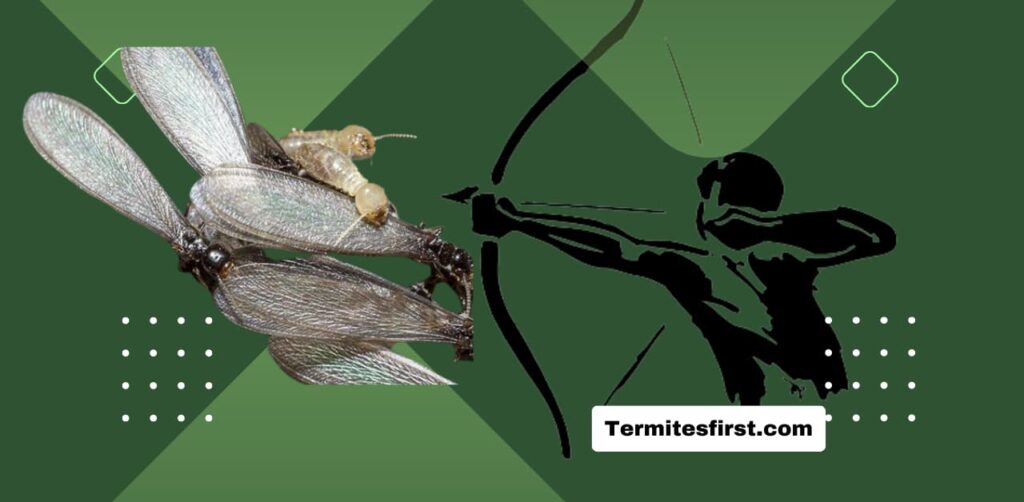
Preventative Tips
Consider using some termite swarmer prevention tips to protect your home. Keep wood piles away from the foundation and ensure proper drainage around your house. Seal cracks and crevices in walls to prevent entry.
Regular inspections can help catch infestations early. I recommend scheduling a professional inspection every few years, especially if you live in an area prone to termites.
Immediate Actions to Take
Contain Activity
Homeowners should act quickly when they notice swarming termites. Closing doors to the affected room can limit their movement. This simple step can help contain the activity of the swarm. It prevents them from spreading to other areas in your home.
I remember when I first encountered a termite swarm. I panicked and didn’t know what to do. After closing off the room, I felt more in control. It’s essential to keep calm and take immediate action.
Vacuum Swarmers
Vacuuming visible swarmers is an effective way to reduce their numbers. Use a vacuum cleaner with a bag to collect them. Once done, dispose of the bag in a sealed container. This method prevents further spread of the insects.
Make sure to check all corners and surfaces where swarmers might land. They are often attracted to light sources, so focus on those areas first. I found that using a strong flashlight helped me spot them more easily.
Save Samples
Saving a sample of the insects is crucial for identification purposes. Place them in a small container or plastic bag. This allows pest control professionals to determine the type of termite. Identification helps in knowing the best treatment options.
If you have any doubts about whether you’ve captured termites, don’t hesitate to consult an expert. They can provide valuable insights into the potential source of the infestation. Identifying the colony’s location is key for effective treatment.
Schedule Inspection
Scheduling an inspection with a pest control professional should be your next step. They will assess your home for signs of termite damage. A thorough inspection takes time but is necessary for long-term solutions.
Most professionals recommend annual inspections for homeowners, especially in areas prone to termites. I learned this after my experience with termites last year. Regular checks can save you from costly repairs down the line.
Check Walls and Holes
Inspect walls for any holes or signs of damage caused by termites. Termites can create small openings as they tunnel through wood. These holes may lead you to their nesting area or colony.
Also, look for mud tubes along walls or foundations. These tubes are made by termites as they travel between their source of food and their nest. Finding these signs early can help you take action before it worsens.

Safety Precautions During a Swarm
Avoid Insect Sprays
Swarming termites, also known as swarmers, can be alarming. Many people might think about using insect sprays. However, this is not a good idea. Sprays do not help with swarmers because they die naturally without soil access. Using sprays can also harm beneficial insects and disrupt the environment. I learned this the hard way when I tried to spray and saw no difference in the termite situation.
Do Not Seal Exit Holes
Sealing exit holes may seem like a smart move. It might feel like you’re stopping the swarmers from escaping. But this can actually trap them inside your home. It’s important to let the swarmers leave safely. Sealing holes will only create more problems later on. I remember watching swarmers fly out of my home and feeling relieved that I didn’t seal anything up.
Keep Children and Pets Away
Safety is crucial during a swarming event. Children and pets should stay away from the area where swarmers are present. This prevents any accidental ingestion or contact with the swarmers. Swarmers are not harmful but can cause panic among kids and pets. My dog once got too curious and tried to chase after some swarmers, which was chaotic! Keeping them at a safe distance is wise.
Monitor the Situation
Monitoring the situation is essential during a termite swarm. Observing their behavior helps understand how severe the infestation might be. Swarms usually last for a few hours to a day, so plan accordingly. Take note of where they are coming from and going to. This knowledge can guide you in deciding your next steps.
Contact Professionals
If you feel overwhelmed, contacting pest control professionals is an option. They have experience dealing with swarming termites and can offer solutions tailored to your specific situation. Professionals use methods that are safe for your home and the environment. I found it helpful to speak with an expert who provided insights into preventing future swarms.
Be Patient
Patience is key when dealing with swarming termites. The situation may seem urgent, but most swarms are temporary. Understanding that these events will pass helps reduce anxiety. Allow nature to take its course while keeping safety measures in place.
Importance of Quick Response
Preventing Damage
Swift action against swarming termites is crucial. These pests can cause significant damage to your home if not addressed quickly. I learned this the hard way when I noticed a small swarm near my porch. I hesitated, thinking it was just a minor issue. A week later, I found more termites and realized they had already started to eat through the wood.
Taking immediate steps can save you from costly repairs. The longer you wait, the more extensive the damage can become. Termites work silently and quickly, so it’s essential to act fast.
Costs of Delay
Delaying your response can lead to larger infestations. As termites spread, they can compromise structural integrity. This often results in higher repair costs. For example, a small infestation might only require a few hundred dollars for treatment. However, a larger problem could escalate into thousands.
I once read about a homeowner who ignored early signs of termites. Eventually, they faced a bill of over $10,000 for repairs and treatments. This experience emphasizes the importance of addressing termite issues right away.
Early Detection
Early detection is key to effective termite management. Regular inspections can help identify problems before they escalate. Homeowners should look for signs like mud tubes or discarded wings. These indicators often signal an active infestation.
Using professional pest control services can also aid in early detection. Experts have the tools and knowledge to find hidden infestations that homeowners might miss. I have used such services in the past and found them invaluable for peace of mind.
Taking Action
When you spot swarming termites, take action immediately. Start by sealing entry points around your home. This includes cracks in walls and gaps around windows and doors. Next, remove any wood debris from your yard, as it attracts termites.
Consider contacting a pest control specialist as well. They can provide targeted treatments that effectively eliminate termites. My experience with professionals has shown that their expertise makes a significant difference in managing infestations.
Ongoing Monitoring
After treatment, ongoing monitoring is necessary. Regular checks will help ensure that termites do not return. Homeowners should remain vigilant about changes in their property’s condition.
I keep an eye on my home for any signs of new infestations. Staying proactive has helped me maintain a termite-free environment.

Identify Termites vs Ants
Physical Characteristics
Termites and ants look similar but have key differences. Termites have straight bodies without a pinched waist. Ants, on the other hand, display a noticeable constriction between their thorax and abdomen.
I often find it surprising how many people confuse these two insects. Knowing these differences can help in identifying a termite problem early.
Wing Structure
Another clear distinction lies in their wings. Winged termites, also known as winged adult termites, have four wings that are equal in size. In contrast, ants possess two larger front wings and smaller hind wings. This difference is crucial during a termite inspection.
Seeing winged termites swarming is alarming. It signals that they might be looking to establish new colonies.
Behavior Patterns
Behavior also sets termites apart from ants. Termites swarm in large groups, especially during certain seasons. They often do this to mate and start new colonies. Ants tend to act more independently and do not swarm in the same manner.
During my time observing these insects, I noticed that termite activity increases after rain. This swarming behavior indicates they are seeking mates and can lead to new infestations if not addressed quickly.
Colony Structure
The structure of their colonies shows another difference. A termite colony typically has a queen, workers, and soldiers. The queen lays thousands of eggs, ensuring the colony’s growth. Ant colonies may also have queens but often focus on foraging for food rather than expanding rapidly like termite colonies do.
It’s fascinating how quickly a small group of live termites can grow into a significant problem if left unchecked. I once saw a termite colony expand within weeks due to favorable conditions.
Swarming Times
Swarming usually occurs during warm months, particularly in spring or early summer. This timing allows them to find mates before returning underground or establishing new nests. Recognizing when this happens can help homeowners take preventive measures.
In my experience, being aware of these swarming times can aid in spotting potential issues early on. Taking action quickly can prevent further damage to structures.
Effective Methods to Eliminate Termites
Professional Services
Consider hiring professional termite exterminators. They offer comprehensive plans tailored to your specific situation. Their expertise helps identify the type of termites infesting your home, whether they are drywood or subterranean termites.
I once had a termite problem in my house. A pest control company assessed the damage and provided an effective treatment plan. They used advanced techniques that I couldn’t have done alone.
Baiting Systems
Explore baiting systems for termite extermination. These systems attract troublesome termites and eliminate entire colonies over time. Bait stations are placed around your property. Termites consume the bait and carry it back to their colony, affecting other termites.
Baiting can take several months to show results, but it is effective in managing infestations. I appreciate how these systems work silently and do not disrupt my daily life.
Liquid Insecticides
Utilize liquid insecticides as another option. These create a barrier around your home, blocking future infestations. Applying these chemicals requires careful attention to instructions for safety and effectiveness.
Liquid treatments can be applied by professionals or homeowners. I prefer using professionals because they ensure proper application and coverage.
Monitoring Systems
Implement termite monitoring systems for ongoing protection. These systems help detect termite activity early. Regular checks allow you to address problems before they escalate into full-blown infestations.
Monitoring requires minimal effort after installation. I find peace of mind knowing that my home is being watched for any signs of trouble.
Prevention Tips
Practice comprehensive termite prevention methods. Keep wood away from the foundation of your home. Ensure gutters direct water away from the structure, as moisture attracts termites.
Seal cracks and crevices in walls and foundations. Regular inspections can help catch signs of damage early on. I make it a habit to check my property every few months to prevent unlucky termites from settling in.
Avoid Common Mistakes
Ignoring Signs
Ignoring signs of termite activity can lead to severe damage. I once overlooked small exit holes in my door frame. Within a year, those tiny holes turned into significant structural issues. Early detection is key. Look for signs like mud tubes and droppings. These indicate that termites are nearby. If you notice these signs, take immediate action.
Using Household Sprays
Using household insect sprays against swarmers is a common mistake. Many believe these sprays will eliminate the problem quickly. However, they often do not work effectively on termites. I learned this the hard way when I tried to spray them myself. The swarm persisted, and it became clear I needed professional help. Instead of using DIY methods, seek expert advice.
Delaying Action
Delaying action can worsen the situation. Swarming termites can cause extensive damage in a short time. They can eat through wood and weaken structures significantly. If you see swarmers near your home, act right away. Don’t assume they will go away on their own. Taking quick steps can save you from costly repairs later.
Misunderstanding Lifecycle
Misunderstanding the lifecycle of termites can lead to mistakes in treatment. Many people think that eliminating swarmers will solve the problem entirely. However, swarmers are just one stage in their lifecycle. The real issue lies deeper within the colony itself. Treatments must target the entire colony for effective results.
Overlooking Hidden Areas
Overlooking hidden areas is another common mistake. Termites often hide in walls or under floors, making them hard to detect. I found this out after checking only visible areas in my house. Once I inspected deeper, I discovered more exit holes than expected. Regular inspections of less visible areas are crucial.
Not Seeking Help
Not seeking professional help can result in bigger problems down the line. Many homeowners feel confident handling pest issues alone. However, termite infestations require specialized knowledge and tools for proper treatment. I realized that hiring an expert was essential for thorough inspection and eradication.
Understanding Damage
Understanding potential damage is vital for homeowners. Termites can cause thousands of dollars in repairs if left untreated. The average cost of repairing termite damage can range from $3,000 to $8,000 or more depending on severity and location.
Best Practices in Swarm Season
Regular Inspections
Maintaining regular inspections of your home is crucial during peak swarming months. These months typically fall between late spring and early summer, especially from April to June. I check my property at least once a month during this time. Early detection can help catch infestations before they grow.
Look for signs like discarded wings or mud tubes around the foundation. If you spot any, take action immediately. Ignoring these signs can lead to significant damage over time.
Seal Entry Points
Sealing cracks and crevices in your home helps reduce entry points for termites. Focus on areas where pipes and wires enter the house. Use caulk or expanding foam to fill gaps. This simple task can greatly limit access for pests.
I often inspect window frames and doorways as well. These spots are common entry points that can be easily overlooked. Keeping these areas sealed is a key part of termite prevention.
Manage Wood and Mulch
Keeping wood and mulch away from the foundation minimizes attraction for termites. Store firewood at least 20 feet from your home. Elevate it off the ground to allow airflow underneath.
Mulch should also be kept at a distance. While it helps retain moisture in gardens, it can attract termites if piled too close to your house. I learned this the hard way when I noticed an increase in termite activity near my garden beds.
Create a Barrier
Creating a barrier around your home is another effective method. Consider using physical barriers like steel mesh or sand barriers during construction. These materials are less appealing to termites and provide extra protection.
Chemical barriers can also work but require professional application. They involve treating the soil around your home with termiticides. This creates a protective zone that deters termites from entering.
Monitor Moisture Levels
Monitoring moisture levels in and around your home is vital. Termites thrive in damp environments, so fixing leaks is essential. I regularly check under sinks, in basements, and around the foundation for signs of water damage.
Proper drainage systems also help keep moisture away from your home’s foundation. Ensure gutters are clean and direct water away from the house.
Conclusion:
Dealing with swarming termites can be stressful, but knowing what to do makes a difference. I’ve shared key signs, immediate actions, and effective elimination methods. Understanding the urgency and acting fast is crucial for protecting your home. I highlighted the importance of distinguishing termites from ants, too. This knowledge helps avoid costly mistakes.
Taking control during swarm season is essential. By following best practices, you can minimize damage and keep your space safe. Don’t wait until it’s too late—take action now! Whether you tackle it yourself or call in the pros, being proactive is the way to go. Protect your home and peace of mind today.
FAQ’s:
Look for winged insects near windows or light sources, discarded wings, and mud tubes around your home. These are clear indicators of a termite swarm.
Isolate the area and remove any standing water. Contact a pest control professional for immediate assessment and treatment to prevent further damage.
Yes, avoid direct contact with the insects. If you have allergies, consider wearing a mask. Keep children and pets away from infested areas.
A quick response minimizes potential damage to your home. Termites can cause significant structural issues if not addressed promptly.
Termites have straight antennae and a broad waist, while ants have bent antennae and a narrow waist. Observe their wings; termite wings are equal in size, whereas ants’ wings differ.
Use bait systems, liquid insecticides, or hire professional exterminators. Each method targets the colony effectively for long-term solutions.
Avoid ignoring signs of infestation and relying solely on DIY methods. Always seek professional help to ensure thorough elimination and prevention.


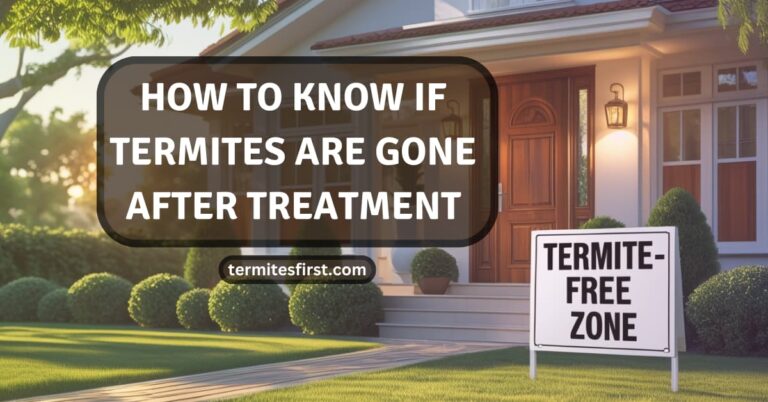

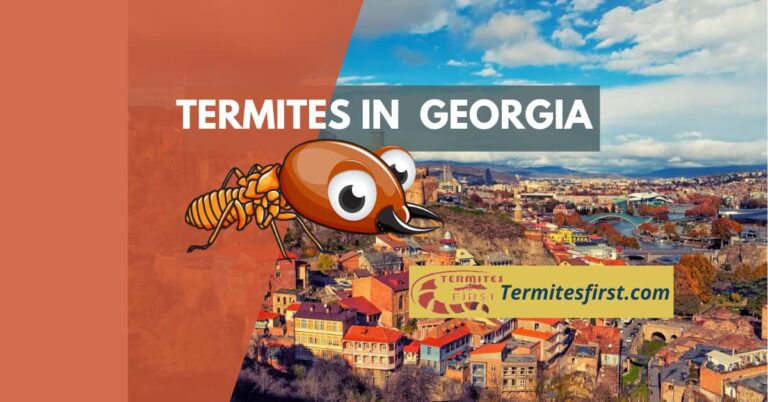

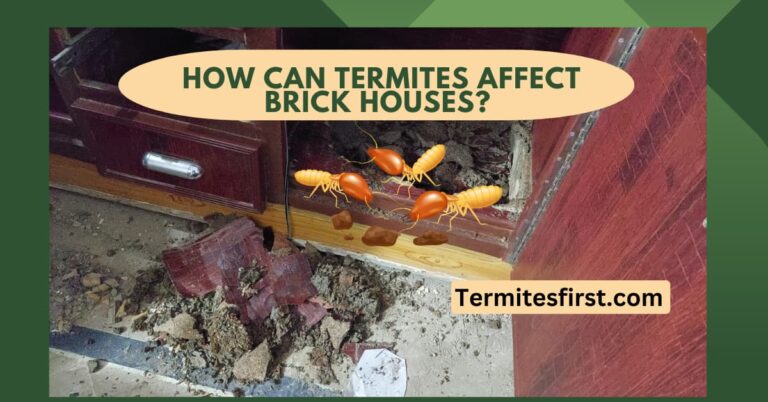
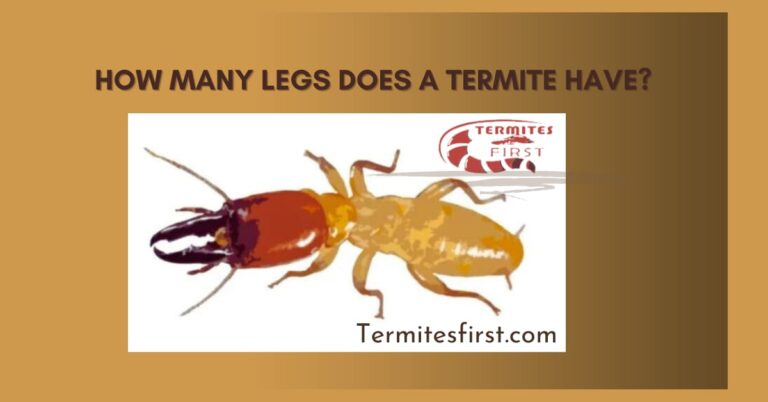
19 Comments